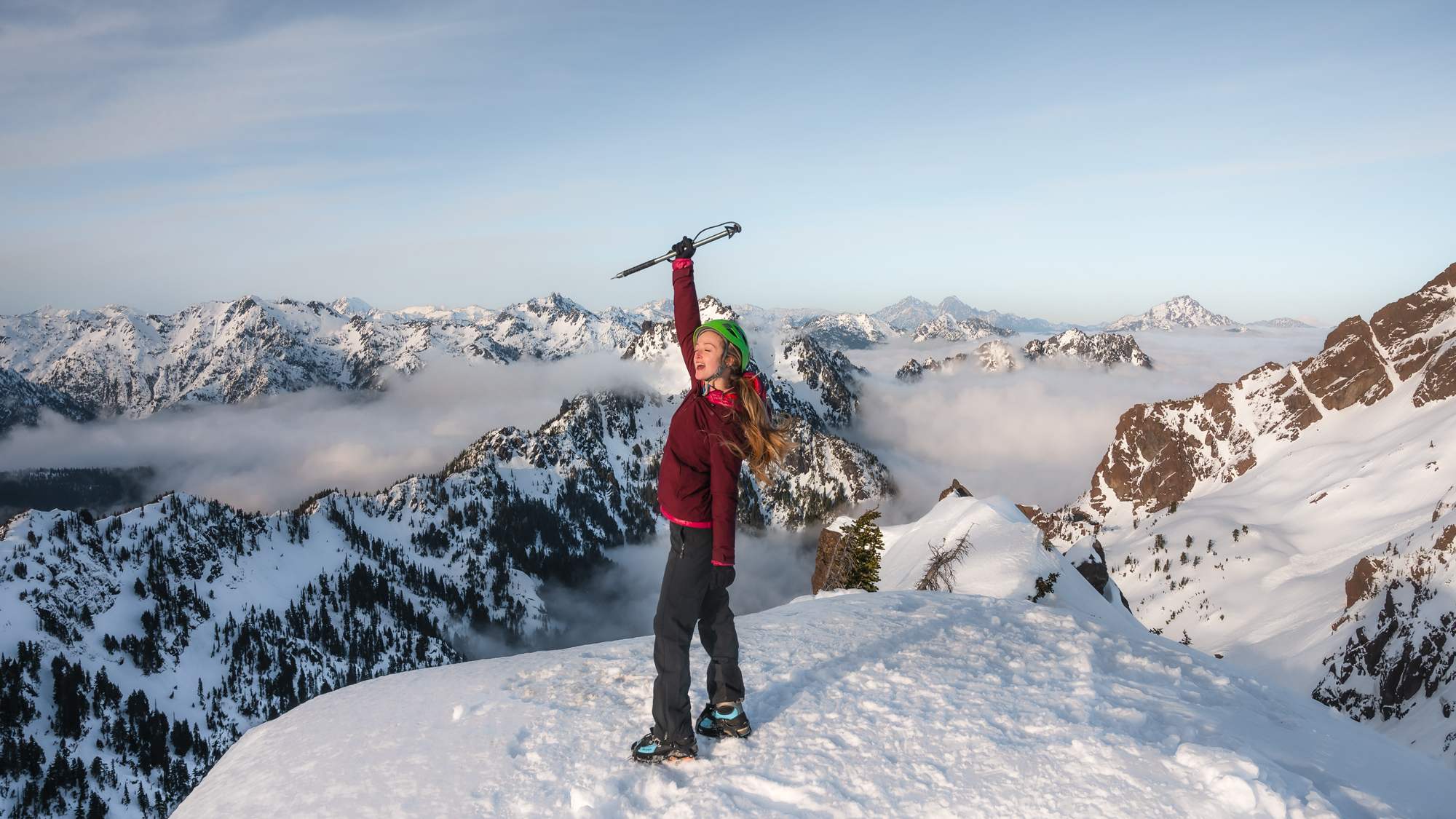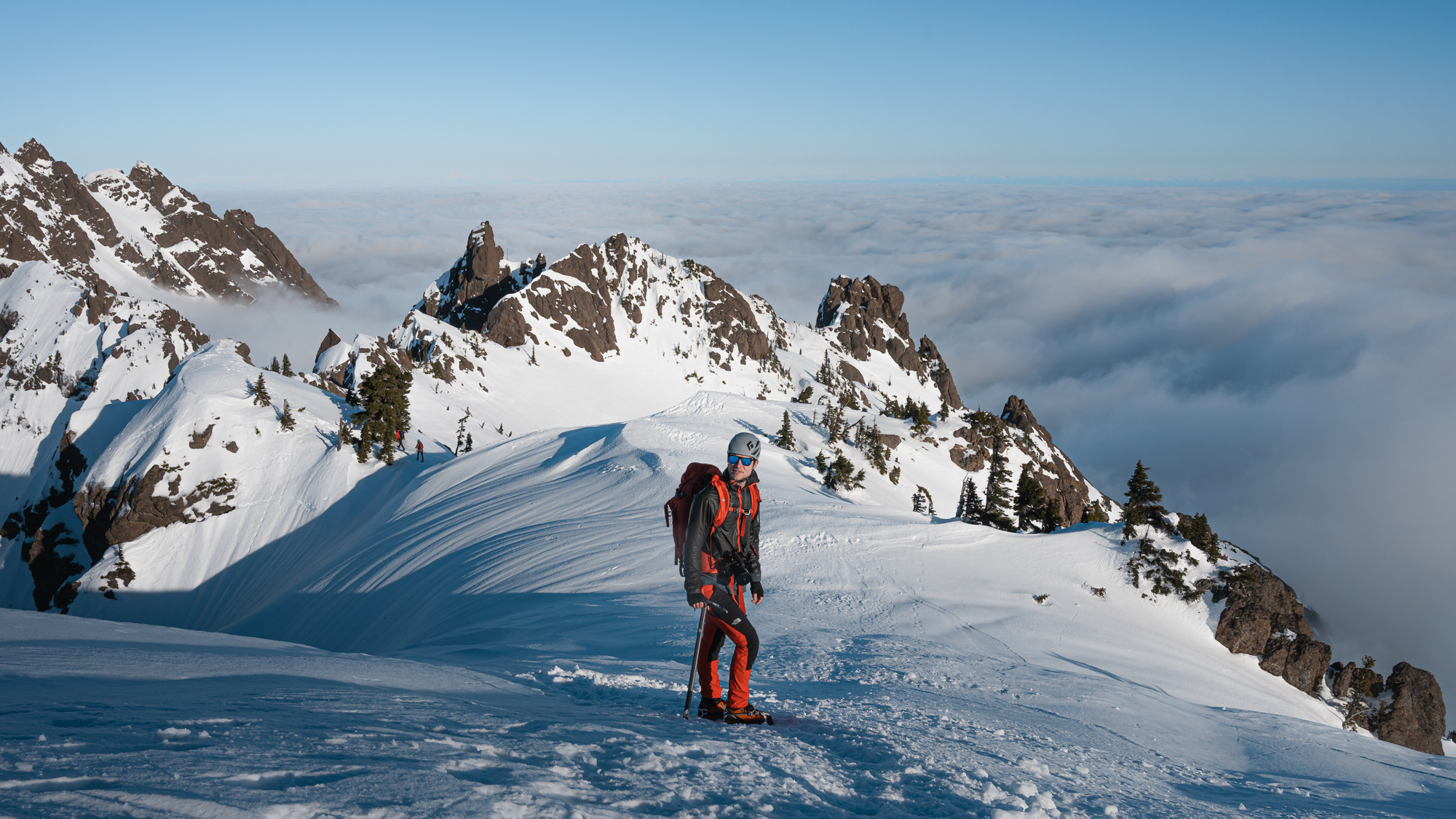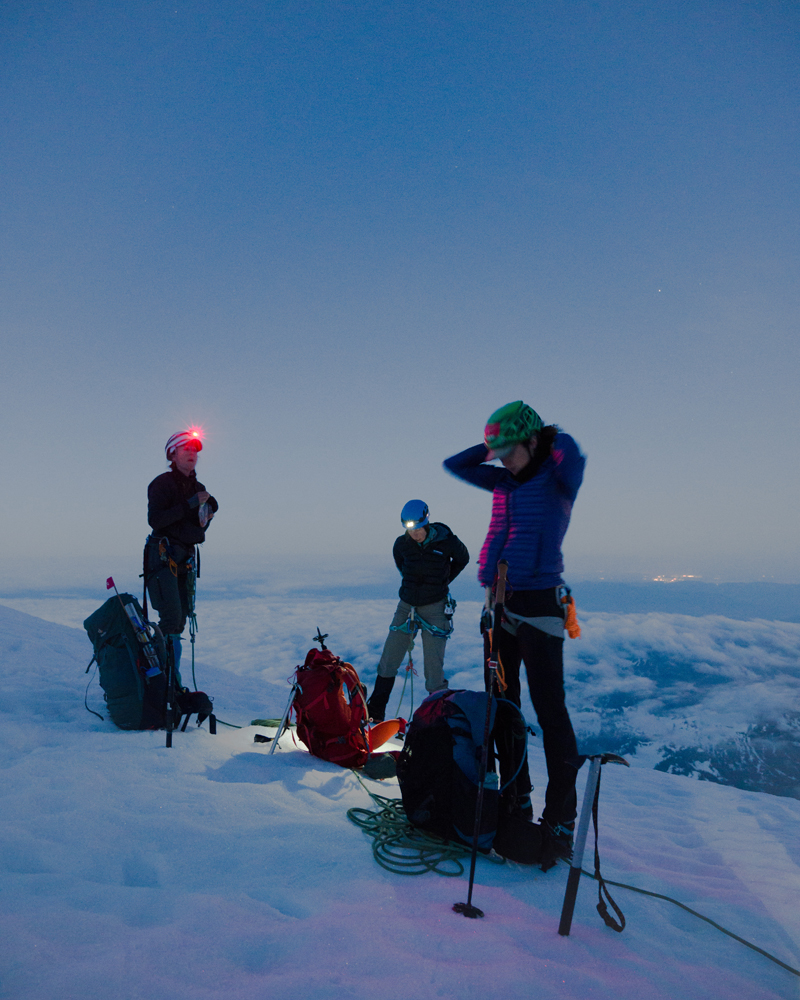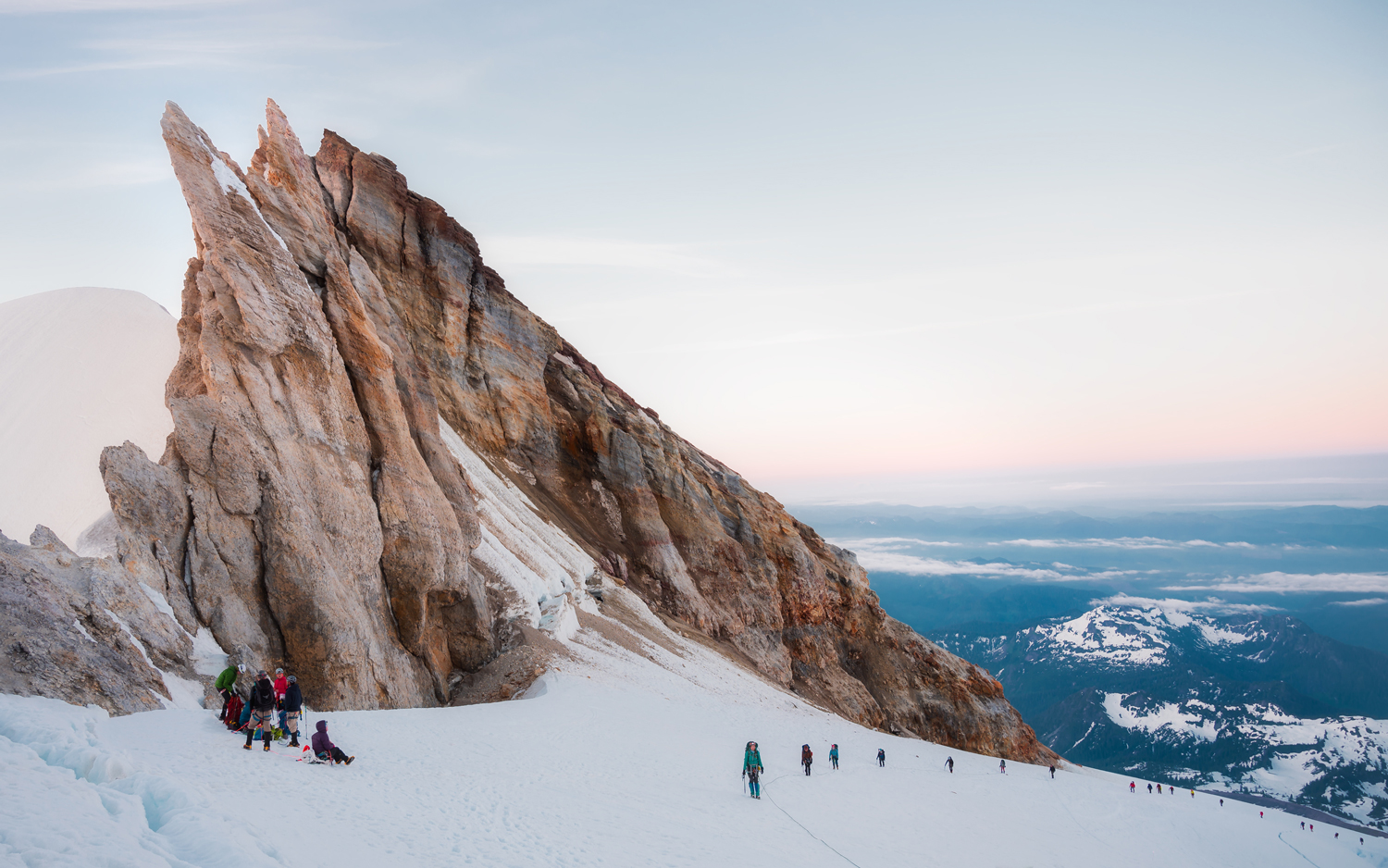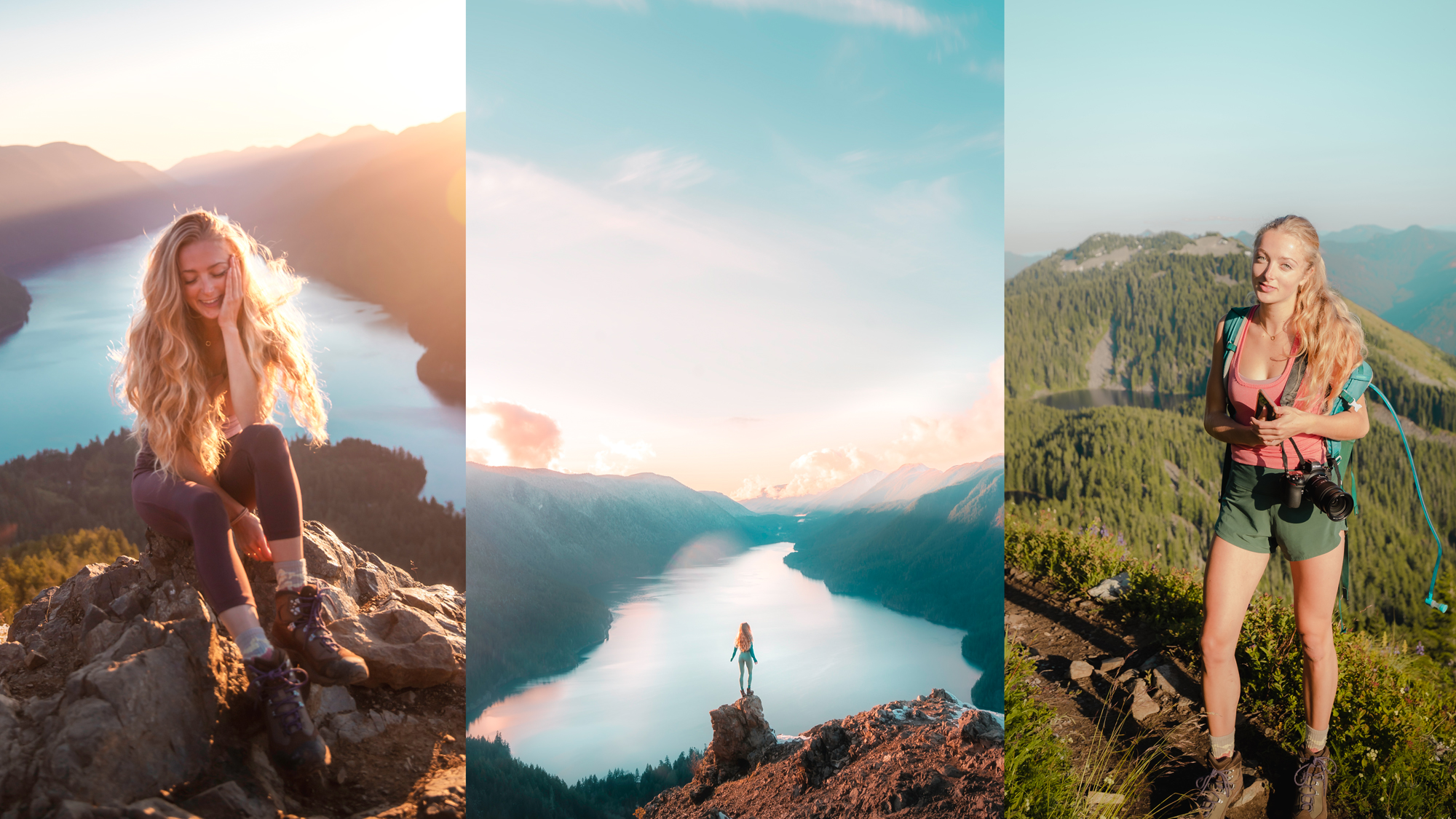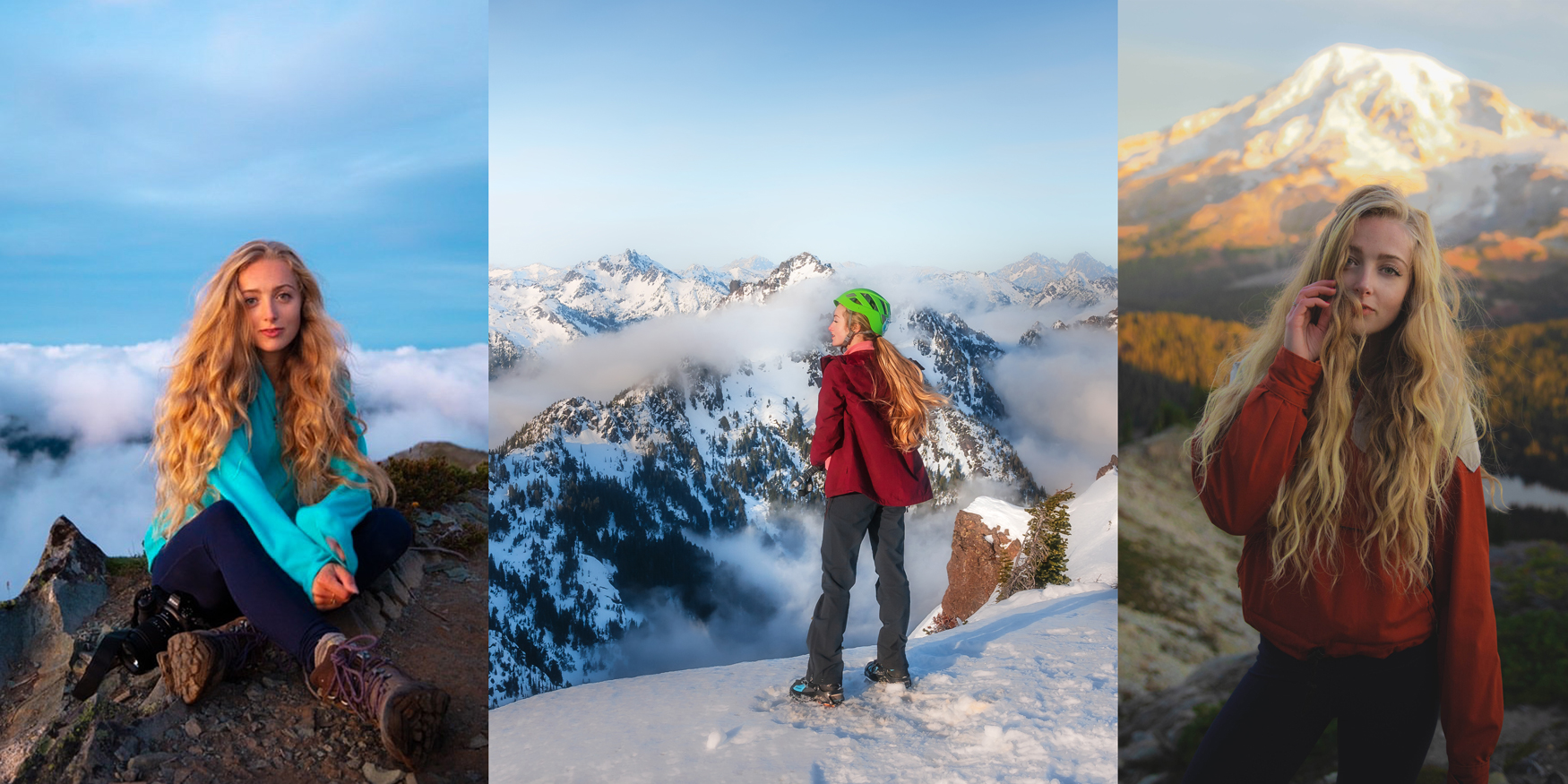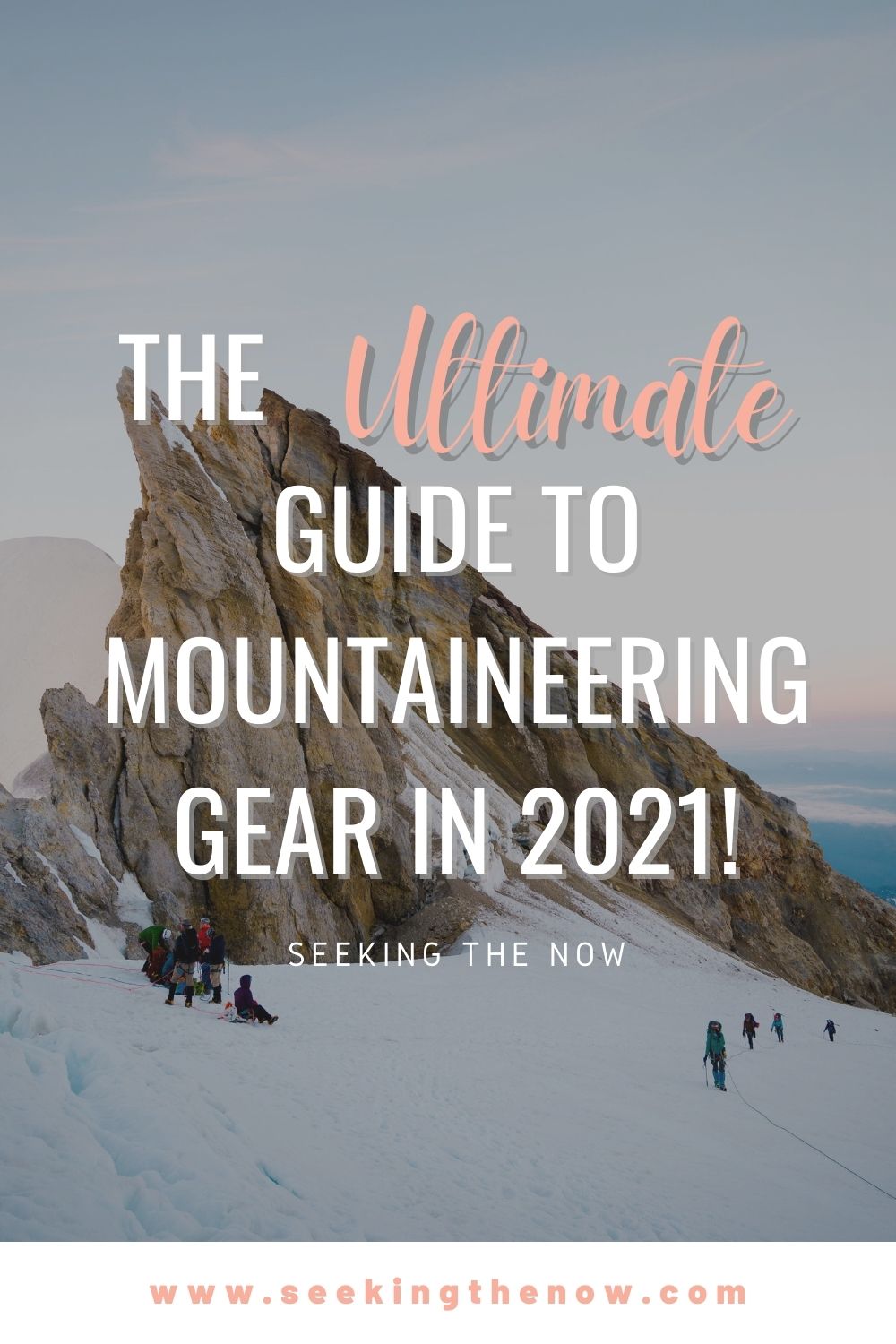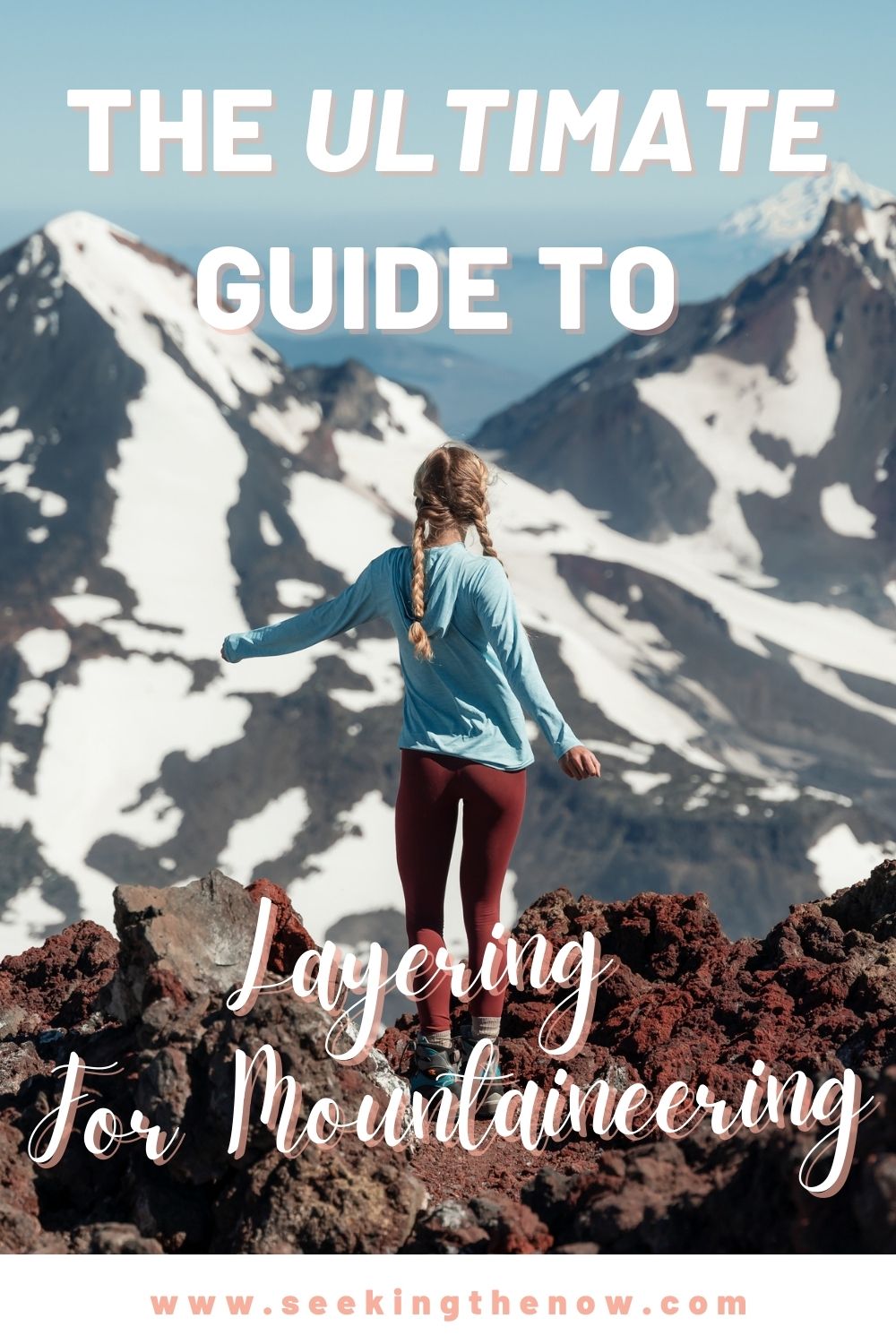Getting Started In Mountaineering: 5 Steps That Will Get You To The Summit!
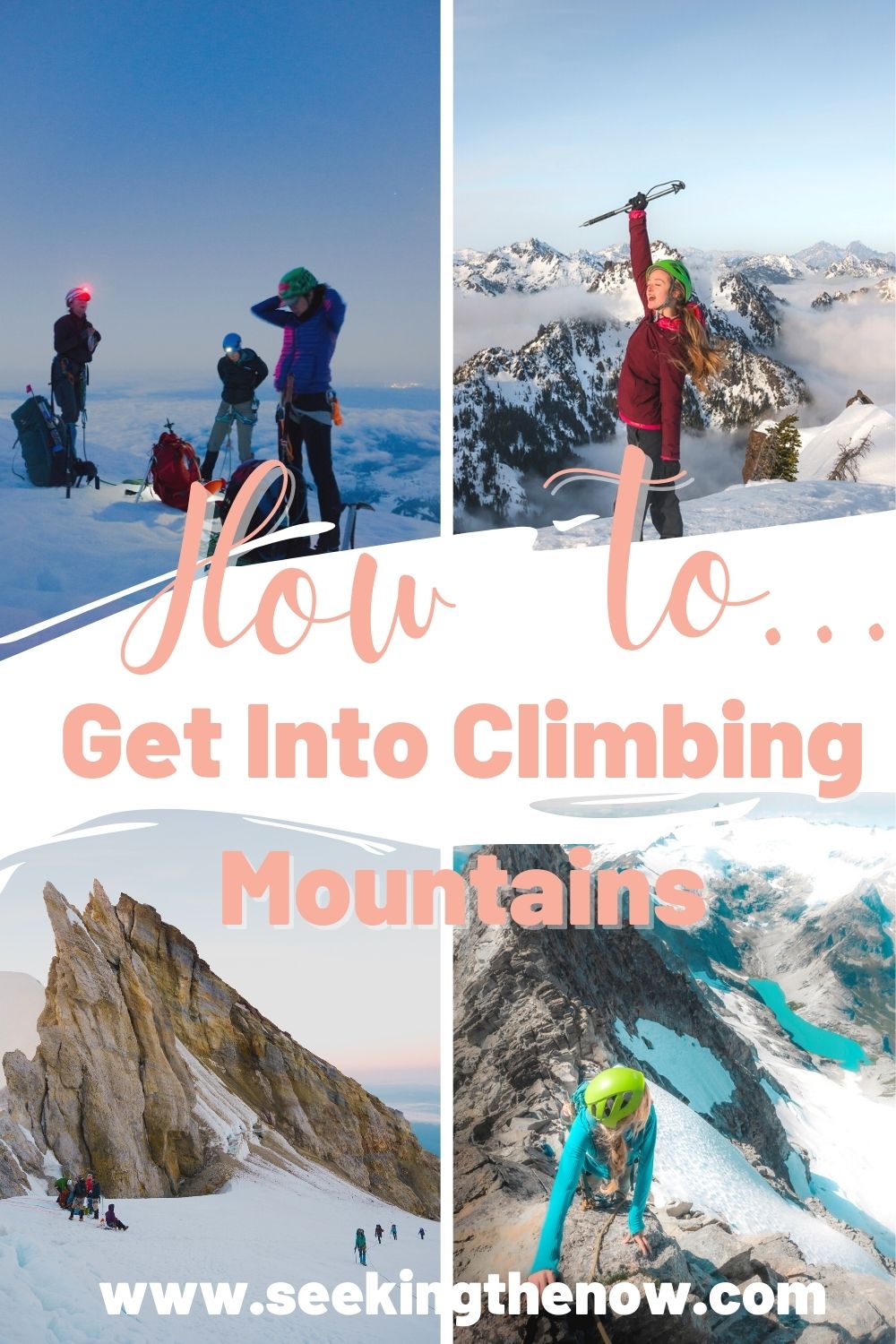
Don’t have time to read it now? Save it for later!
So…you want to get started mountaineering, huh? Well, you came to the right place!
I remember the very first time I ever thought about getting started in mountaineering.
Sitting in a plane flying over the North Cascades, looking down from my window I couldn’t help but gasp at the beauty of the endless peaks.
At that moment I decided I was going to learn to climb mountains.
You may have had a similar realization, maybe you saw an unreal photo on the internet of an amazing climb or possibly watched a documentary following some of the world’s best mountain climbers.
The desire to stand atop a summit and gaze down at the mountain you just scaled below is an exciting one, but it can also be intimidating.
Where does one even start?
If this sounds like you, this blog post will be the perfect guide to getting you on that summit in no time!
Step 1: Assess Your Current Outdoor Skills
Mountaineering isn’t really the type of sport you jump into without any prior experience.
It can be quite dangerous and truly shocking to the system if you have not properly worked up to getting started in mountaineering.
I consider mountaineering to be just like hiking (with a bit of climbing thrown in there) except more dangerous and requiring greater technical skill and fitness.
So you shouldn’t be too surprised when my first recommendation is to begin developing your outdoor skills!
Good questions to ask yourself when assessing your skills for mountaineering are:
What is your hiking experience level?
- Have you done intense hikes with inclines of over 2,000 ft in a short amount of distance (2-3 miles)?
- Have you been out on a trail, carrying a heavy backpack for more than 8 hours?
- Have you had a day where everything went wrong and you had to get yourself home in one piece?
- Do you bring the 10 essentials with you when you hike? (Do you know what these 10 essentials are?)
What is your backpacking experience?
- Have you done a backpacking trip longer than one night?
- Do you have a good system for sleeping in the back country? Cooking in the back country?
- Have you backpacked farther than 20 miles?
- Do you know how to follow a map?
- Have you ever gone winter camping or snow camping?
Have you ever done a scramble?
- Have you needed to route find through a scree field or boulder field before?
- Have you stood on a peak?
- Have you crossed through sections where a fall would be catastrophic?
How is your climbing knowledge?
- Have you belayed someone before? (indoors or outdoors)
- Do you know how to tie basic climbing knots?
- Do you feel comfortable in a harness?
If the answer to most of these is “no” start thinking about stepping into these areas of the outdoors and enhancing your knowledge!
These basic skills will prep you well for the skills that mountaineering entails and will get you used to being in the back country.
Step 2: Learn, Learn and Learn Some More!
If most of the answers to that first step were “Yes!” you are more than ready to move onto the next step- learning the skills!
Getting started in mountaineering requires many different technical skills to keep you safe on the mountain.
The best way to learn is from someone who is already experienced in it!
#1 Way to Learn Mountaineering Skills: Take A Course
Now more than ever there are so many courses you can take to start to learn the skills of mountaineering.
These classes range from simple 1-day classes on beginning snow travel to multiple, month-long courses that go over all of the skills you would need to get into mountaineering and alpine climbing.
Personally, I took a 3 ½ month-long mountaineering course where I was out every weekend learning the appropriate skills.
This class not only taught me glacier travel skills and climbing skills but navigation, layering systems, avalanche safety, setting up camp, route planning and so much more!
Some courses to look into:
- The Mountaineers
- Washington Alpine Club (only applicable if you are in WA) I took their Basic Climbing Course!
- American Alpine Institute
- Northwest Mountain School (PNW Applicable)
Second Way to Learn Mountaineering Skills: Hire a Guide!
If you have a specific route or mountain you are looking to climb, going on a guided trip can be a wonderful place to start!
The guides will do all of the pre-planning and route finding for you so rest assured you will be in good hands.
Many times guided trips also include a crash course on the basics of mountaineering the day prior to the climb.
This gives you a great chance to learn the basic skills and employ them on a real mountain with safe supervision.
Check Out My Washington Wall Art!


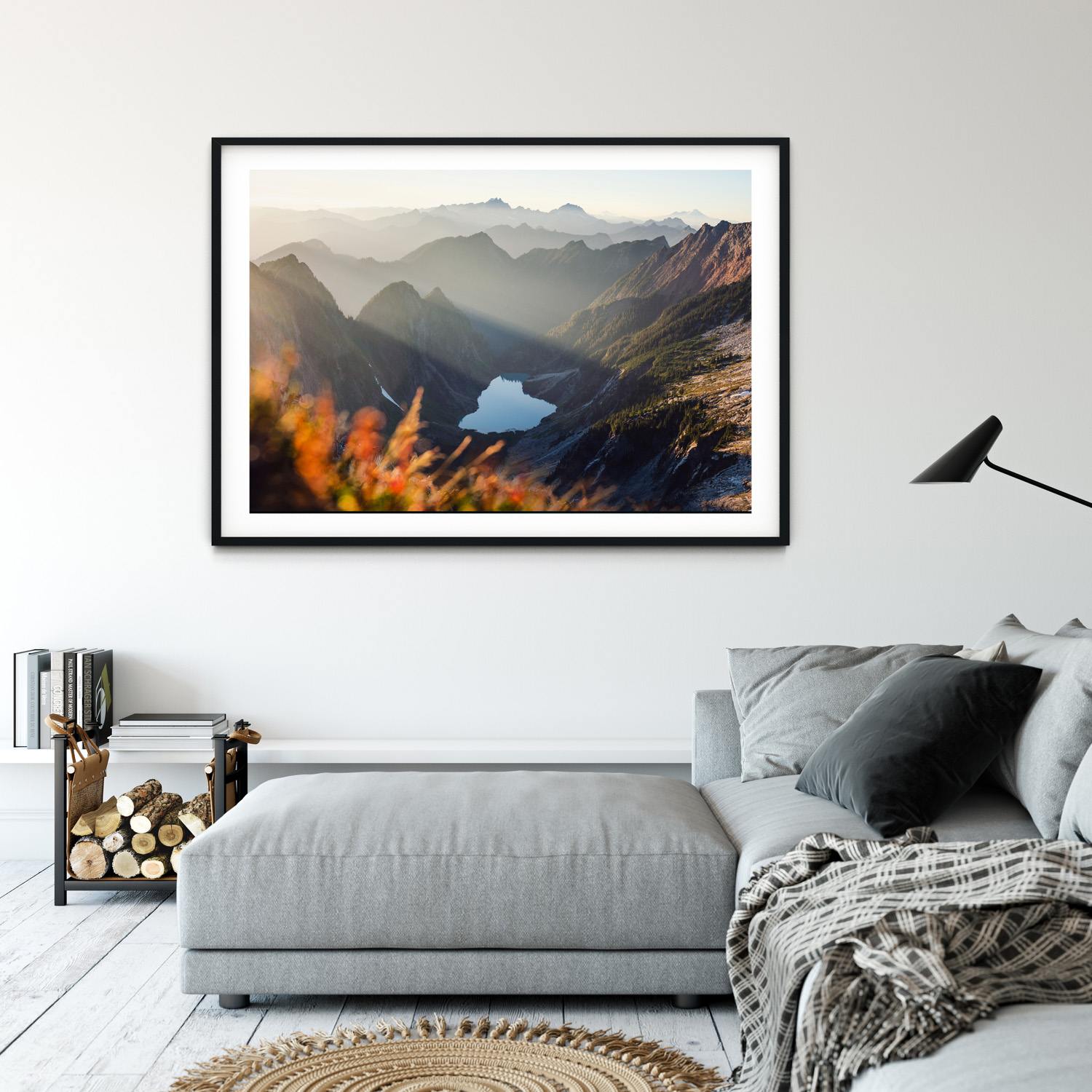
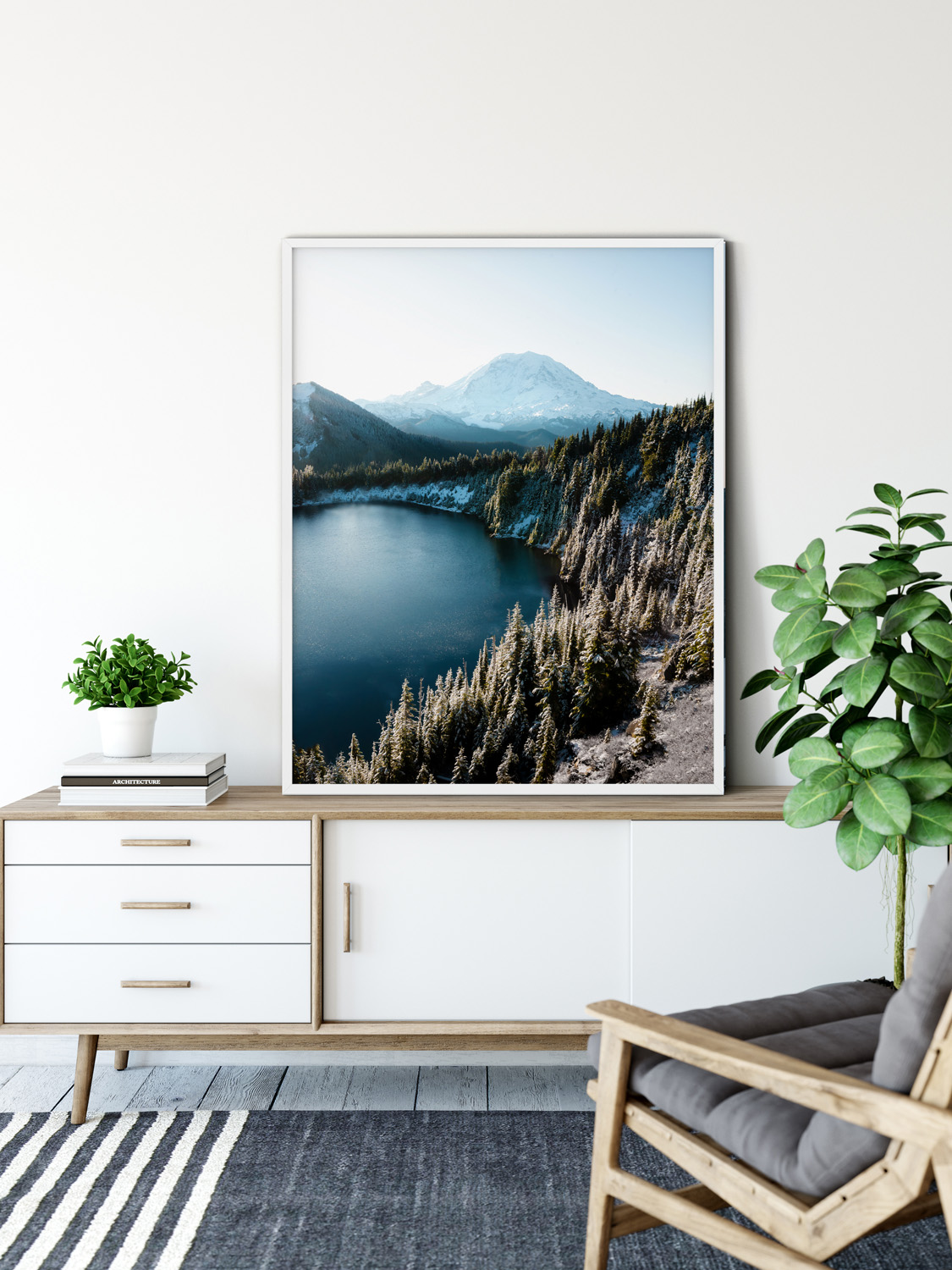

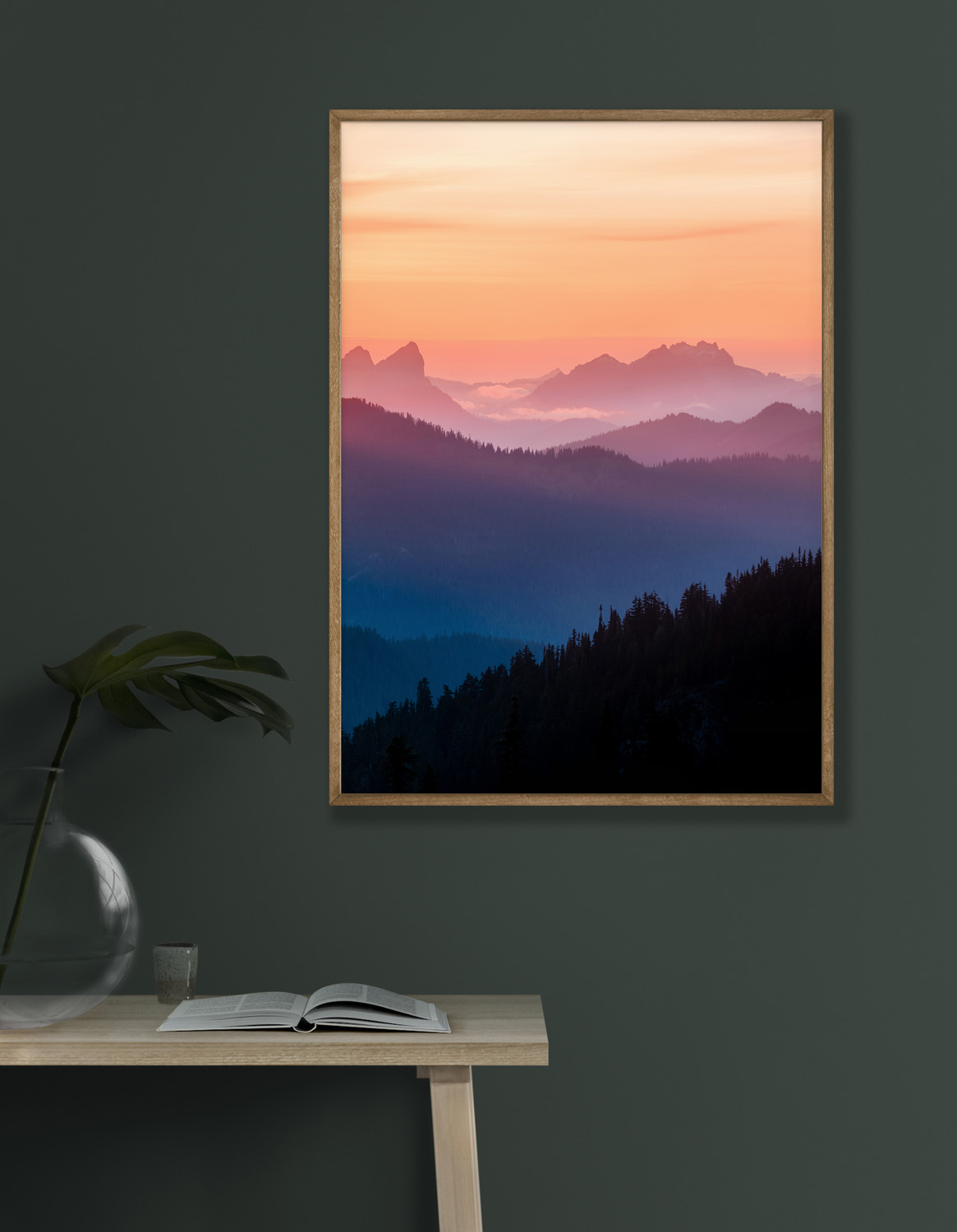
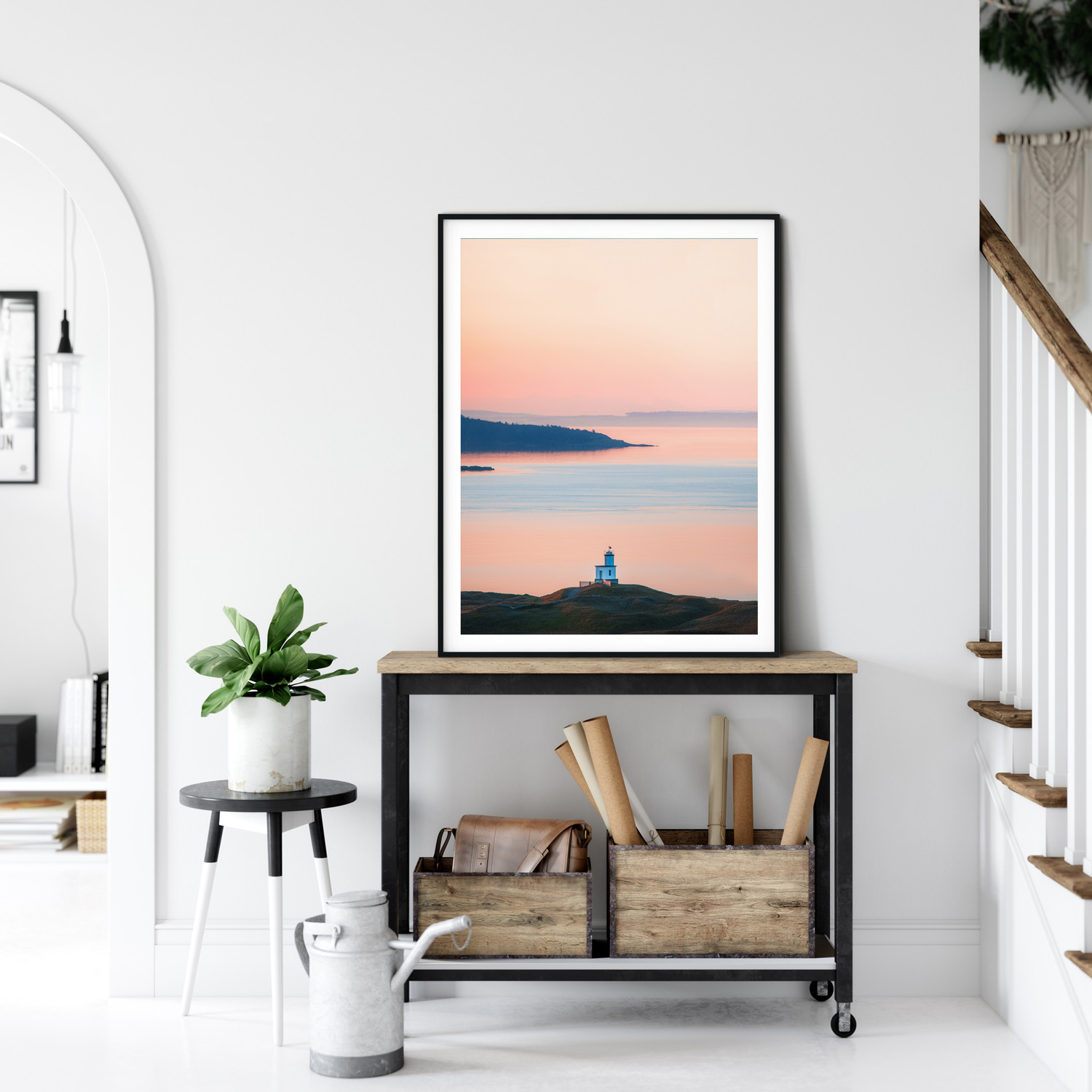
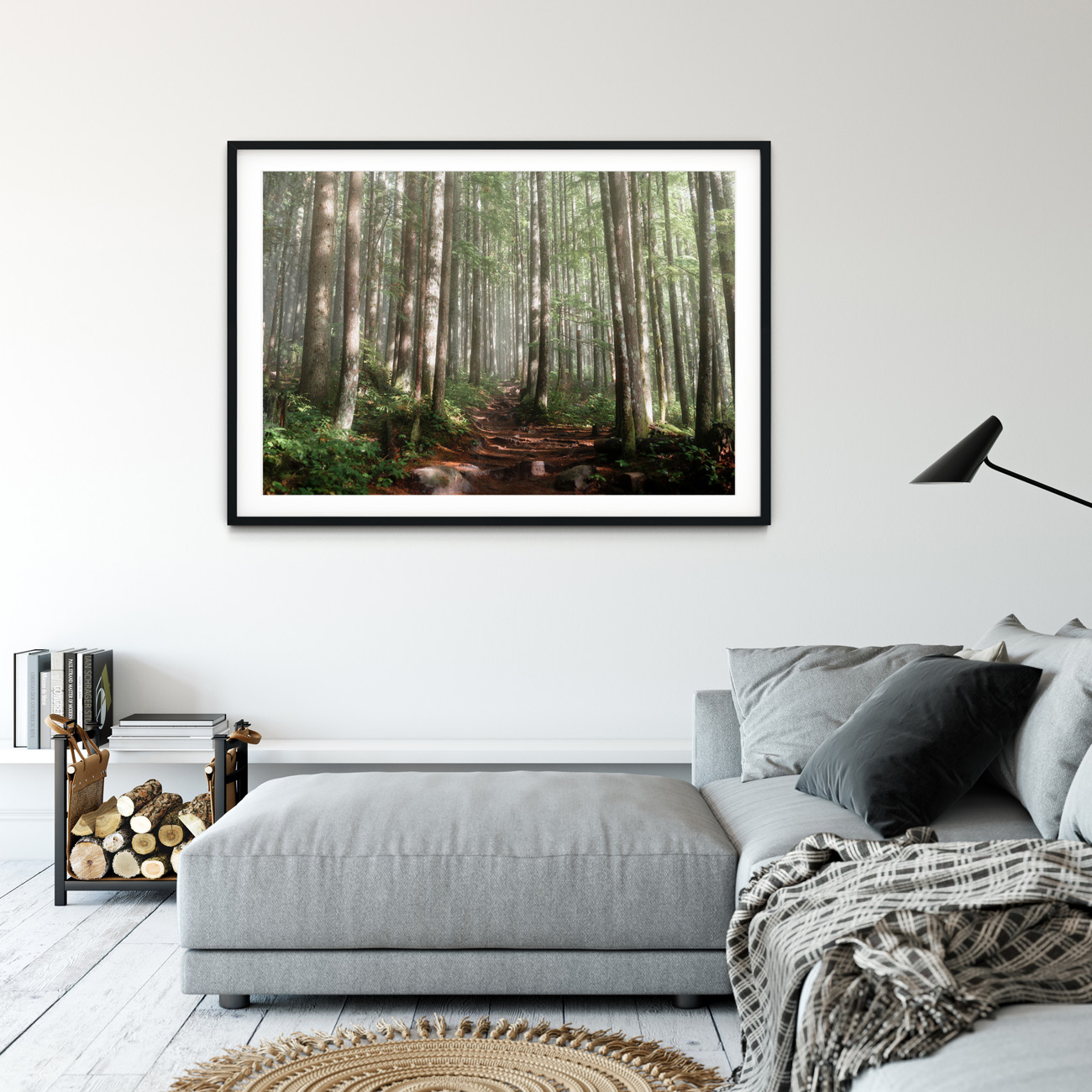
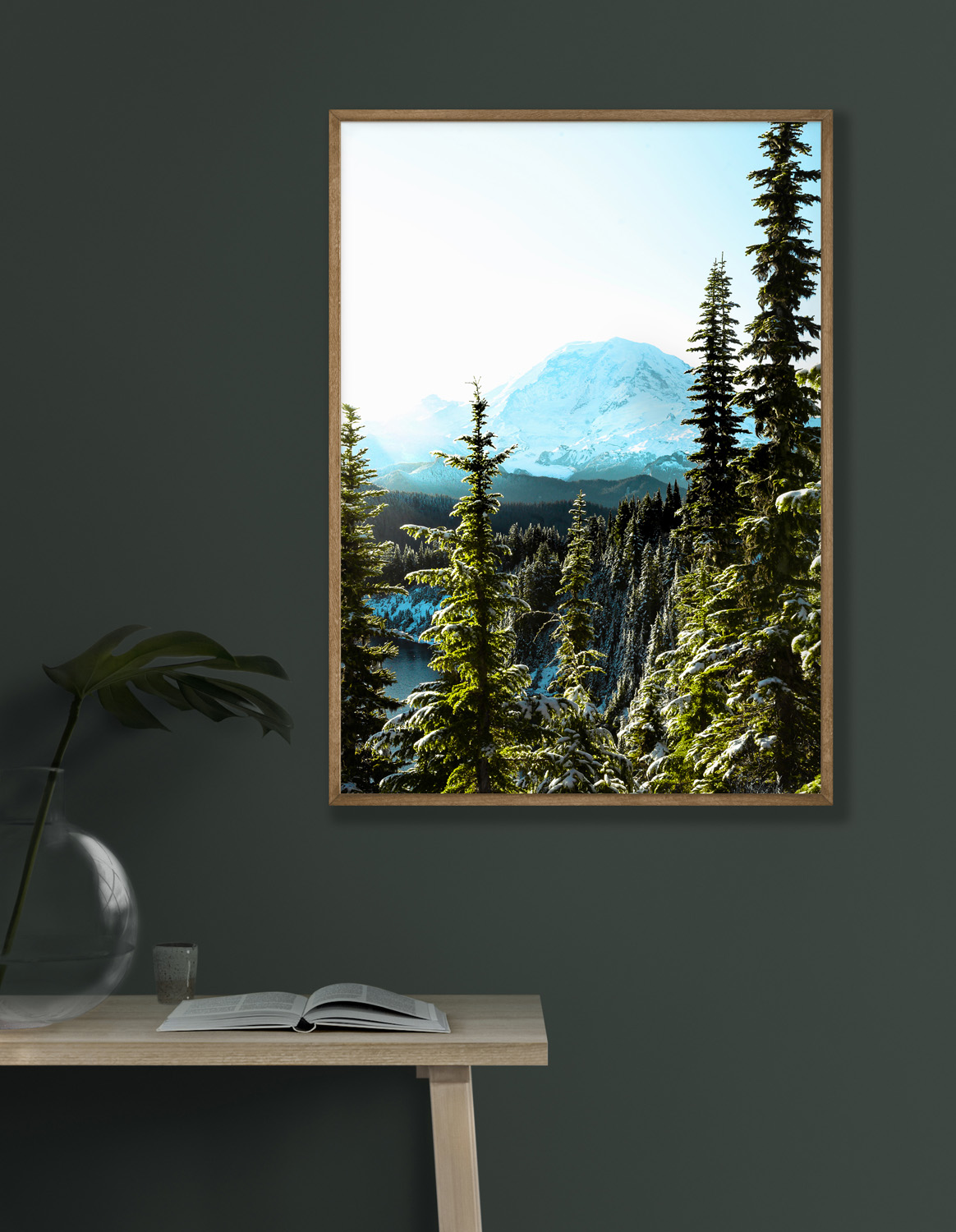

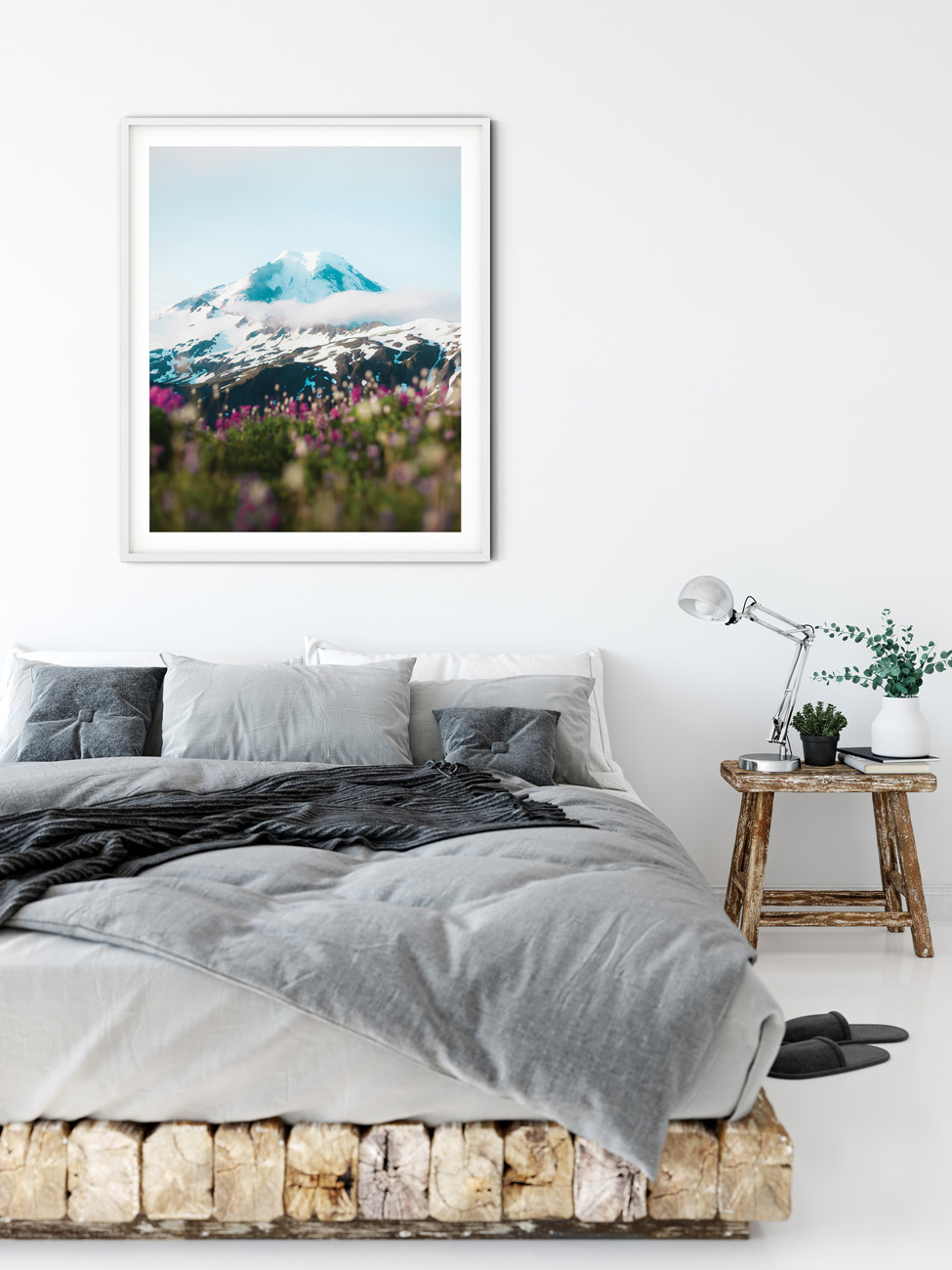
Step 3: Get the Gear For Mountaineering!
When learning the basic skills of mountaineering you will find that it is a highly gear specific discipline.
Collecting all of your gear at once can be an expensive endeavor (I’m talking $1,500-$2,000) so I recommend collecting it as you go!
When you sign up for a course or guided trip, the instructors will give you a gear list- this list will consist of all of the technical tools you need as well as the clothing and personal pieces that will keep you warm and safe.
A basic gear list may look something like this:
- Mountaineering boots– some trips may require four season boots depending on the location but most of the time you should be able to get away with 3 season boots if you don’t plan on climbing in the winter or extremely cold climates.
- Ice Axe- a basic ice axe is a MUST. This is your safety line on the mountains, when you fall this is how you stop yourself and it is used in many other ways.
- Climbing Helmet- another safety must.
- Crampons- these can actually be rented quite easily so I would personally recommend renting them from local gear shops until you decide you are truly dedicated to the sport.
- Mountaineering Harness- these harnesses are generally lighter than your normal rock climbing harness. They keep you attached to the rope on the glacier and catch you under the horrible accident of falling into a crevasse.
- Locking Carabiners- These help you connect your tools to your harness, and your harness to the rope.
- Backpack- Needless to say you’re going to be carrying all of this up the mountain, you’re going to need something to put it in!
There are many other items you will need to get you safely up the mountain but this basic list will get you started!
Check out my blog post on layering systems here to see the apparel that is needed for keeping you warm and dry on the mountain.
Step 5: Choose a Goal Route and Find Partners
Now that you have the education and gear, it’s time to get out and use it! Summit time, here we come!
First Step: Find Your Mountaineering Partners!
Solo Mountaineering is neither recommended nor that much fun, having a team you can rely on, of people you love and trust makes the whole process that much more enjoyable.
If you don’t know anyone else who is interested in climbing there are a couple of ways you can find partners.
- Take a Course! I know I already recommended this for learning but it is a wonderful way to meet other beginners who are interested in the same things you are!
- Join a Club! There are awesome clubs out there for people who are into climbing and mountaineering- the Sierra Club is one, American Alpine Club another. Do a google search in your area and I’m sure something will pop up!
- Frequent the Climbing Gym! Many times people who are into climbing will be into mountaineering as well!
- Use social media! Whether this is joining a FB group dedicated to mountaineering or commenting on other peoples awesome summit pictures on Instagram, social media is a wonderful connector.
Second Step: Pick a Goal Route!
Research routes in your area to find one that is at your level.
By utilizing guide books, the internet, local blogs, and youtube you can be sure to find some that spark your interest.
When picking a route make sure to research it backward and forwards before deciding it is a good idea.
Being in the know is the best way to keep yourself safe and stay within your experience level.
Some questions to ask yourself when picking and planning your route are:
- How many miles is it?
- How much elevation gain is there?
- What type of climbing is required?
- When is the best time of year?
- What is the average amount of time it takes most teams?
- How many people should be on your rope team?
- How technical is the route?
- What skills are necessary to summit? Is it just basic glacier travel or is there more required.
- What type of terrain will you be on?
- What is the current route like?
Step 5: Get Training!
The final step before getting on the mountain!
Let’s get fit!
Many people would say this step should come before all the others, and while I believe you should be fit enough to complete all the prior steps I think the most important training comes after you decide on your goal route.
By deciding on your training after you pick the route you can tailor it specifically to what that route entails.
Mountaineering training breaks down into three categories: endurance training, strength training, & mental training.
Endurance Training for Mountaineering
Mountaineering- especially glacier travel is entirely an endurance sport.
You will be slogging up a mountain for 8- 10 hours at a time, navigating over steep, icy terrain and occasionally having to climb over rocky areas and cross over crevasses.
Not to mention you have to do all of this at altitude (yikes!)
Being able to quickly traverse this terrain and keep a steady pace without burning yourself out is essential for safety!
This is where endurance and aerobic stamina comes into play heavily.
Strength Training for Mountaineering
Carrying all of the gear you need for long periods of time is sure to keep your muscles working hard. That’s why it is pretty much imperative to add weight lifting into your training!
I would recommend focusing on your legs, glutes and calves as well as your abs and back for stabilization!
Mental Training:
This one is a bit harder to develop without actually getting out there and climbing some mountains. I like to think of this as grit.
Mountaineering can do a number on your mental reserves, when your body is tired and not running on enough fuel, spirits tend to get low.
You need to make sure you are mentally strong enough to push through to either the finish line or back to the car.
You can develop grit through overcoming adversaries. Think of it as if you are slowly pushing your mental comfort zones boundaries farther and farther each time.
A good way to do this is through backpacking far distances, going on intense hikes that are a bit out of your normal comfort zone and finding new challenges to overcome.
Conclusion
I know that was a ton of information, but if you break it up into chunks you should be summiting mountains in no time!
Mountaineering is such an awesome way to push yourself physically and mentally.
It is an amazing feeling knowing you pushed yourself that far and gives you the confidence to continue moving forward in every aspect of your life!
Have fun out there & good luck on your journey! Maybe i’ll see ya on a summit one day 😉
Check Out More Mountaineering Guides!
Recent Posts
Shop With Me on Etsy! Click A Photo Below!
Join Me on Instagram!

